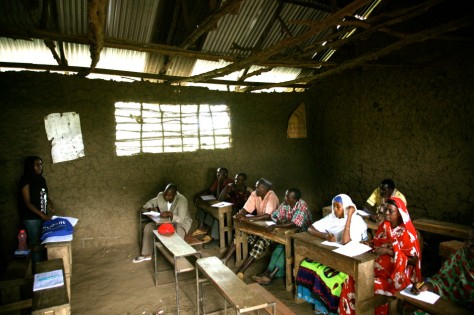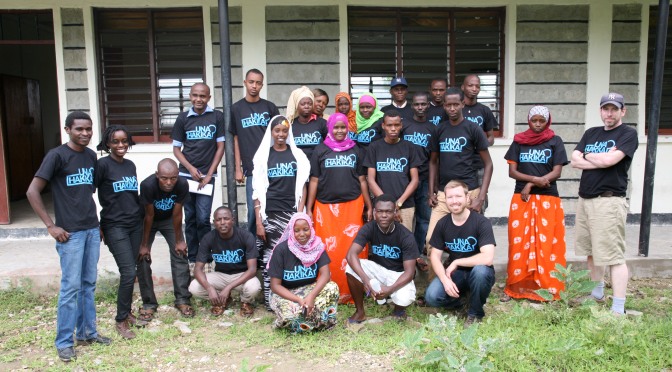Christine Mutisya is a project coordinator for the Una Hakika project. She has an MSc in development and project planning from Bradford University. She is engaged in managing misinformation for the Sentinel Project, involving herself in peacebuilding activities and project management.
Adrian Gregorich is the community manager at the Sentinel Project. His academic background is in human rights, holding an MSc in human rights from the London School of Economics and Political Science, and an honours BA in political science and human rights from Carleton University in Ottawa. Adrian has worked with a number of NGOs around Africa as well as in Canada. His research and campaigning interests lie in mine action, violence prevention, poverty reduction, and global primary health care. He works as a freelance writer and resides in Ottawa, Canada. He can be reached via Twitter: @AdGregorich
—
Misinformation is a major problem in societies around the world, especially now that the rise of social media enables the spreading of rumours to happen much faster than was possible in the pre-digital era. Kenya’s Tana Delta region provides a good example not only of how misinformation can spread, but also how information and communication technologies (ICTs) can be used to monitor and contain its harmful effects.
Misinformation was one of the factors that led to violence in the Tana Delta during 2012 and 2013, a time when Kenya was warming up to the general election scheduled for March 2013. At such times, politics and land injustices become especially salient and these also factored into the clashes which killed nearly 170 people while displacing tens of thousands. The aftermath included increased hatred and mistrust between the two most affected ethnic communities, the Orma and the Pokomo. Even after the election period ended, misinformation still spread throughout the Tana Delta, thus continuing tensions in the region.
A Sentinel Project team visited the Tana Delta in early 2013 and recognized this problem of rumours, which led to the creation of Una Hakika (Swahili for “Are you sure?”), a mobile phone-based information system used to map and counter misinformation in the Tana Delta. One of Una Hakika’s long-term goals is to enable people to ask themselves are you sure before taking action on any information. Rapid action on false rumours before verification led to some of the violence in 2012-2013.

Before setting up the system, the Una Hakika team conducted a baseline survey throughout the Tana Delta during January-February 2014 in order to understand the spread of information in the region, what technologies people use to share that information, and to generally understand the potential users of Una Hakika in order to better design the system. One key finding from the survey was that 87.3% of the 249 respondents believed rumours contributed to violence in the region, while 61.1% of respondents had heard information they believed to be untrue within the previous 12 months. Out of those 61.1% only 50.6% took further action to verify if the information was true.

Una Hakika works as a free mobile phone-based reporting system with a short code through which individual citizens report incidents or potential misinformation, after which they receive verification of its accuracy. This works via a three-stage process. In the first stage, users send information to the system, through SMS, phone calls, the Una Hakika website, or by speaking to a trained community ambassador. who serve as a bridge between people and technology.
The second stage of the process prioritizes and verifies received messages by drawing upon a variety of information sources which may be able to provide the facts of the situation relating to a given rumour. These sources include the community ambassadors, local authorities (police and administration), other NGOs operating in the area, and the media (social media and mainstream media).
Third, once the Una Hakika team has verified reports of a rumour they are then able to provide feedback to the community about the authenticity of the information. This response is targeted to ensure that the rumour management process does not inadvertently spread rumours. Rumour verifications are still only sent to subscribers in the villages from which those rumours were reported, since there is a risk of people who have not heard a given rumour focusing on the wrong parts of a counter message and disregarding the statement that the rumour is false.
Two years down the line, Una Hakika has seen tremendous results. People’s mindsets have changed in the sense that now when a resident in the Tana Delta hears a rumour their first reactions is increasingly likely to verify its validity before passing it on or taking any action. The number of survey respondents who would look into the accuracy of information the were not convinced was true has risen from from 50.6% to 57.4%. Previously, information tended to be taken at face value, and some people would take drastic action upon hearing threatening rumours.

Government officials also see the importance of Una Hakika as they are now able to synchronize efforts with the system, thus ensuring that they do not waste time or resources reacting to false information. Another advantage of the Una Hakika model is that residents who fear being interrogated by police can report to the Una Hakika team, which will then turn it over to the authorities. This increased level of trust has resulted in some instances when the Una Hakika team received information about serious incidents (including massacres) even before the police did.
Trust is difficult to build, but this process has been a major factor in the success of Una Hakika’s community engagement. At the beginning of the project the community was wary of their aim, which is understandable due to the violence they had experienced. In order to gain trust the Una Hakika staff had to rely on existing trusted networks such as the local administration, religious leaders, and community elders.
Community engagement goes hand-in-hand with trust. While Una Hakika uses technology to fight misinformation, the human element cannot be ignored. The cultures of the Tana Delta value face-to-face meetings, and the priority given to conduct such meetings has played an integral role in Una Hakika’s success. However, this is not easy since one must ensure impartiality and inclusivity when dealing with an ethnically diverse community such as those in the Tana Delta.
Despite many challenges, the Una Hakika project has made a substantial contribution to the peacebuilding process in the Tana Delta through the development, testing, and refinement of tools and techniques for countering misinformation that has the potential to lead to violence. The Una Hakika model also demonstrates great potential for being applied in other regions of Kenya, as well as other violence-prone areas around the world.
Further Reading:
